Broadcast radio, an information technology that emerged in the 1920s, created America’s first electronic mass medium. As Americans from across the country and from all walks of life had access to the same news, information, music, and entertainment, the nation was brought together in a common popular culture.
Using the powerful medium of radio broadcasting, Fulton Sheen and Walter Maier communicated the love of a gracious God and the never-changing Gospel of Jesus Christ to a national audience starved for hope in the midst of a depression and a world war. Is something similar possible today?
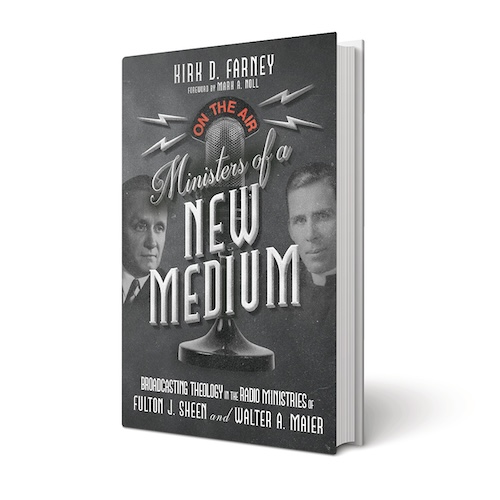
By Kirk D. Farney
(IVP Academic, 2022)
In fact, much of today’s popular culture goes back to radio, as the national radio networks NBC, CBS, and ABC made the transition to the new technology of television by putting its programming (soap operas, variety shows, news reporting) and its stars (Jack Benny, Bob Hope, Lucille Ball) onto the screen.
Two of the most popular radio programs between 1930 and 1950 were The Catholic Hour, featuring (then) Fr. Fulton J. Sheen, and The Lutheran Hour, featuring Pr. Walter A. Maier. Some 15 million listeners tuned in every week to hear a sermon from this Catholic priest and this Lutheran pastor. (By way of comparison, today, with our much larger population, Fox News has 1.7 million viewers.) Both The Catholic Hour and The Lutheran Hour had a bigger audience than did Jack Benny, Bob Hope, Charlie McCarthy, or Frank Sinatra.
One might assume that America of the ’30s to ’50s, a time span that included the Depression and World War II, was just more interested in religion than it is today. But this was also the time of what historians call the “American Religious Depression,” when churches declined dramatically in membership and cultural influence.
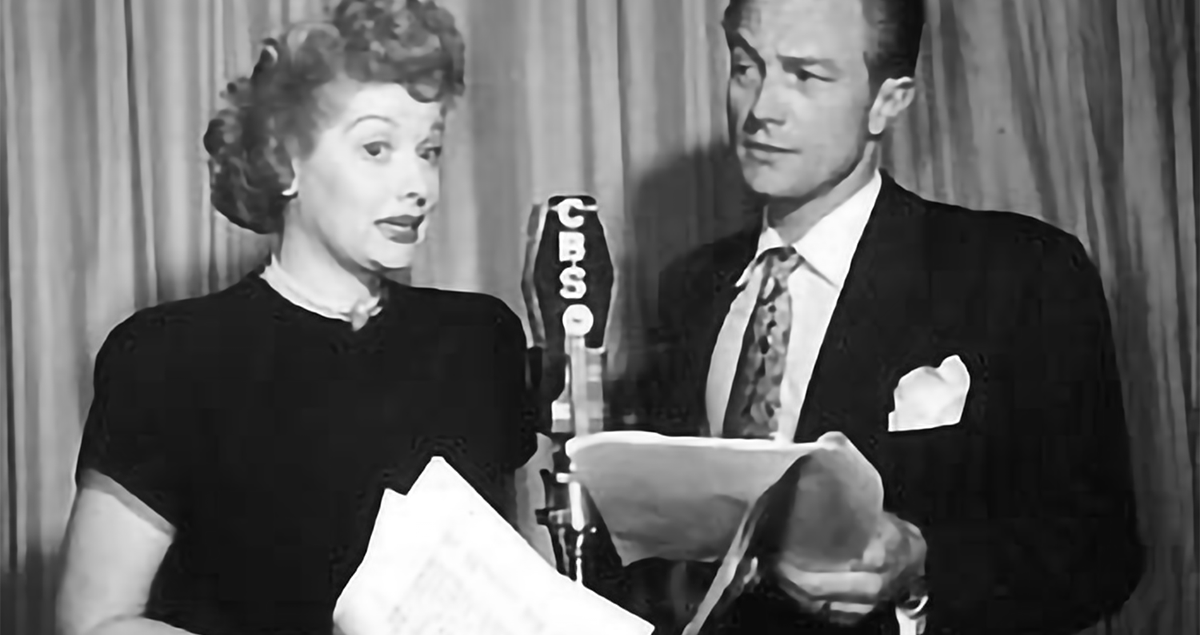
So why were Sheen and Maier so popular, especially since they were both spokesmen for “foreign” churches that had been regarded with suspicion and bigotry?
In his book Ministers of a New Medium: Broadcasting Theology in the Radio Ministries of Fulton J. Sheen and Walter A. Maier, Kirk D. Farney takes up that question. In doing so, he makes his book a valuable resource for Christians interested in bringing America out of its current “religious depression.”
Commercial radio had its start in the early 1920s, with local stations providing their own programming, often including religious broadcasts. Maier saw the potential of the new medium for proclaiming the Gospel from the beginning. With support from the Lutheran Laymen’s League, Maier persuaded the Lutheran Church—Missouri Synod to build a radio station, KFUO, on the campus of Concordia Seminary in St. Louis, where he was a professor. Broadcasting began on October 26, 1924, featuring a lineup of religious services and Maier’s preaching.
Radio became a nationwide medium with the advent of networks—such as the National Broadcasting Company (NBC), Columbia Broadcasting System (CBS), and the American Broadcasting Company (ABC)—that connected local affiliates throughout the country and provided them programming.
NBC decided to offer free airtime to representatives of America’s major religions: Judaism, Protestantism, and Catholicism. The National Council of Catholic Men offered to provide The Catholic Hour, featuring several hosts through the year, including Sheen, already a well-known speaker in Catholic circles. Maier approached NBC in hopes of taking a Protestant slot, but the network decided to go to the organization that would become the National Council of Churches, which offered several spokesmen for theological modernism, such as Harry Emerson Fosdick.
Catholics, Jews, and liberal Protestants could go on the air for free; conservative Lutherans had to buy air time.
So while Catholics, Jews, and liberal Protestants could go on the air for free, conservative Lutherans would have to buy air time at commercial rates. Undeterred, Maier raised the money for a year’s worth of programming on CBS, which amounted to three times the budget of his entire seminary, and began broadcasting The Lutheran Hour nationwide on October 2, 1930. The Catholic Hour had started seven months earlier on March 2, 1930.
Maier’s program was popular, but it ran out of money after a year. After a year of fundraising, The Lutheran Hour moved to a new national network, the Mutual Broadcasting System, which offered cheaper rates. Broadcasting from the studios of KFUO, The Lutheran Hour soon became a huge hit, as did The Catholic Hour, turning Maier and Sheen into celebrities.
In his book, Farney shows that Sheen and Maier, as well as their programs, were quite similar. Both were supremely educated, with Boston-bred Maier earning a Ph.D. from Harvard and the midwestern Sheen from Peoria earning two doctorates from European universities. Both were highly accomplished academics, with Maier serving on the faculty of Concordia Seminary (then one of the largest seminaries in the nation) and Sheen on the faculty of Catholic University in Washington, D.C.
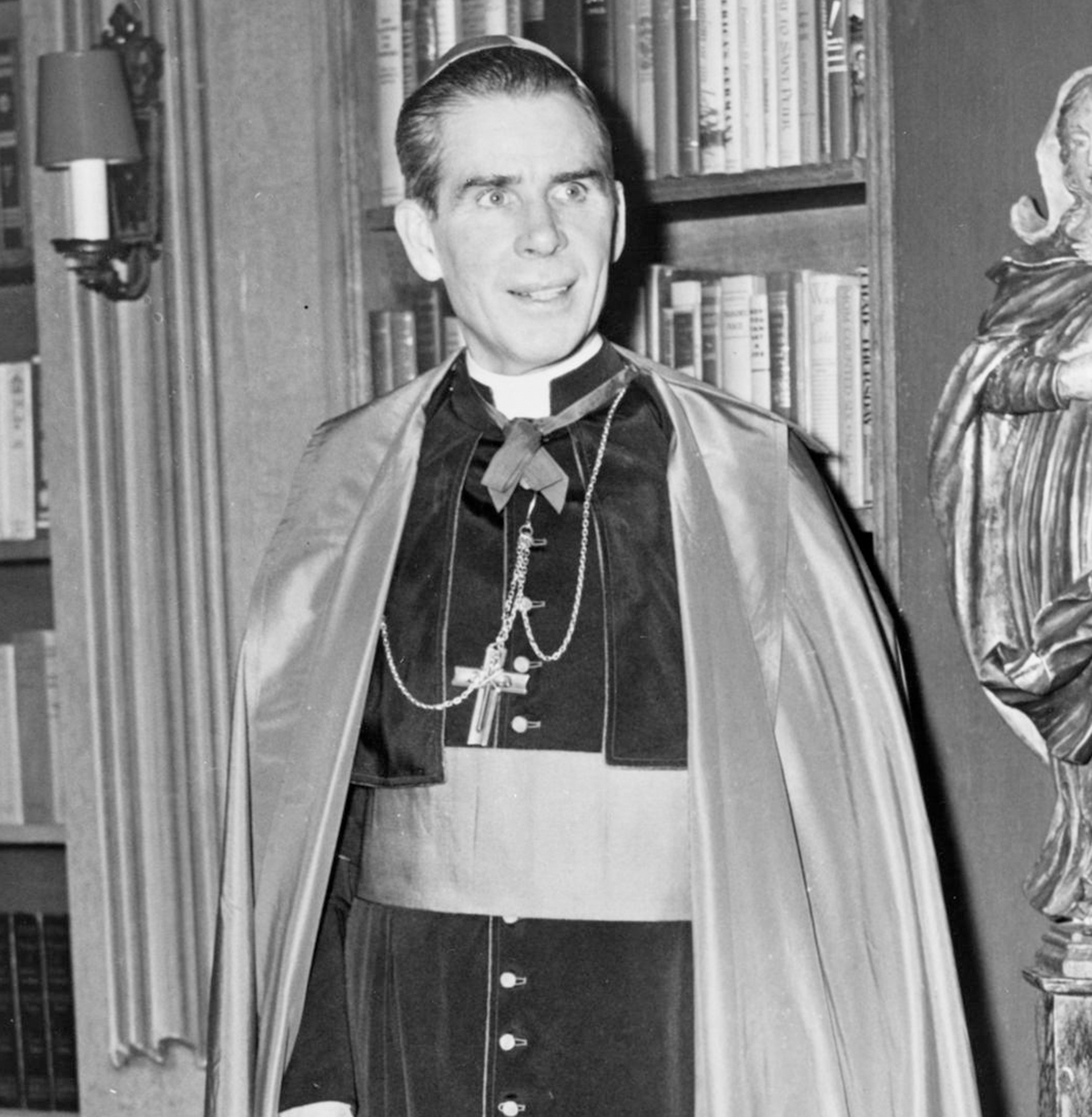
Thus, they were both intellectuals, but public intellectuals, unlike today’s academic specialists who communicate mainly with each other. Both drew on their erudition while effectively communicating with ordinary folks.
Both were also spell-binding speakers. They differed in style, though. Sheen, who would become a bishop in 1951 shortly before leaving radio, was conversational, vivid, and intimate. (For example, note his reflection on the death of Jesus: “There is always a strange power in the eyes of the dying, which enables them to follow the ones they love, even when other senses are mute and dead. His eyes are now resting on the same object He rested on when he was born—His sweet and beloved Mother. She felt His eyes fixed on her.”)
Maier’s style was energetic declamation, using forceful rhetoric and penetrating language. (As in his first Lutheran Hour sermon: “Men can live without money, without fame, without erudition; they can eke out an existence without friends, without health, or without personal liberty and the possibility of the pursuit of happiness; but they cannot live in the fullness of a life that lives beyond the grave without God.”)
The structure of the two programs, which despite their titles lasted for only half an hour, was also similar: a hymn (Maier used Martin Luther’s “A Mighty Fortress Is Our God”) followed by a 20-minute sermon, followed by another hymn and a prayer.
Although many would become Catholics and Lutherans through their ministries, Sheen and Maier sought to evangelize, not proselytize. Although they both came from traditions that could be very polemical, the priest and the pastor resolved not to criticize other denominations.
They did, however, consistently blast theological liberalism, the modernist theology that rejected miracles, critiqued the Bible, and played down the supernatural doctrines of traditional Christianity.
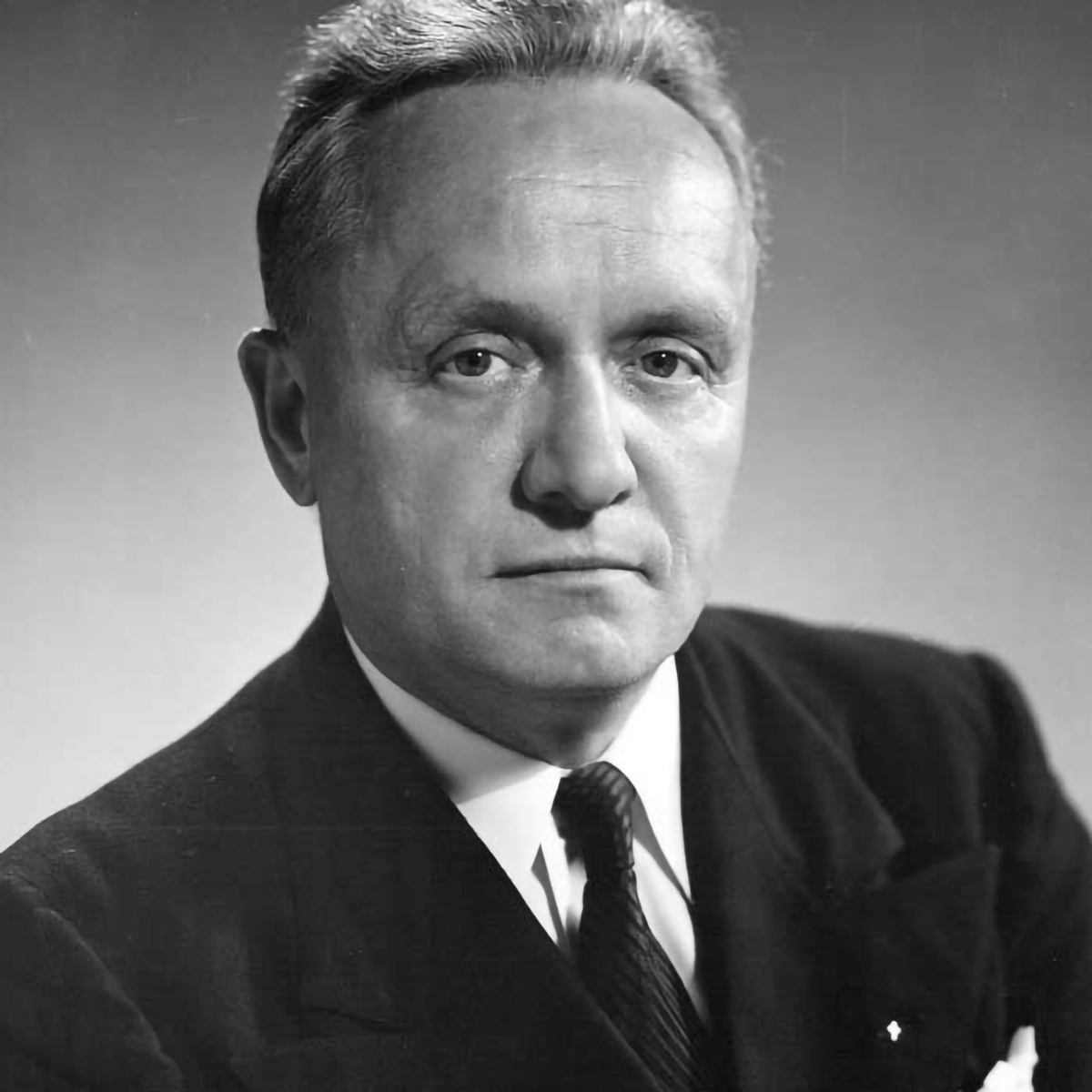
Instead, The Catholic Hour and The Lutheran Hour articulated a robustly orthodox Christian faith. They both emphasized the truth of scriptural revelation, Christ as God incarnate, and the salvation that He offers. Typically, each sermon began with a searing condemnation of sin, often occasioned by a current issue or event, which led to an application of God’s grace to sinners and Christ’s atonement for their salvation.
To be sure, the Catholic and the Lutheran drew on the resources of their respective theologies. Sheen would explain such Catholic teachings as the veneration of Mary and the need to co-operate with God’s grace. Maier would stress such Lutheran teachings as the universality of Christ’s atonement, so that no one is excluded from Christ’s redemption, and the doctrine of the Two Kingdoms, which kept his messages free from politics.
Their audiences extended far beyond their Catholic or Lutheran base (at the time, the LCMS had about 1 million members, whereas 15 million Americans were listening to the Lutheran Hour), so they were never just preaching to the choir. They were preaching, however, in the wake of the fundamentalist-modernist controversy, which had torn American Protestantism apart. I would argue that this context explains much of their appeal. The modernists with their progressive theology were mostly victorious in the mainline Protestantism that was then dominant in American culture. The fundamentalists left those denominations to form smaller church bodies of their own, only to be caricatured as ignorant, backwoods fanatics.
But here on The Catholic Hour and The Lutheran Hour, radio audiences were hearing expositions of orthodox Christianity that had all but faded from many congregations. And it was being defended by men who, contrary to the fundamentalist stereotypes, were intelligent, learned, and sophisticated.
And yet the Catholic and the Lutheran were preaching a kind of orthodox Christianity that was also quite different from that of the typical fundamentalist preachers, many of whom also had radio shows. While Maier excoriated violations of the Ten Commandments, he had little patience for the fundamentalists who fixated on minor lifestyle issues. He said that there was nothing wrong with women using make-up, and he made headlines across the nation when he spoke at a conference at which he criticized Prohibition.
Maier said that one of the spiritual evils he wanted to address was “legalism,” the notion that we are saved by our good works, which in practice often trivializes both sin and virtue. Even many fundamentalists, who supposedly believed in justification (being made right with God) by faith alone, had fallen into this syndrome. Maier countered it in a very Lutheran way by convincing his audience that they—and he—were sinners, but that their sins were covered by the blood of Jesus, a Gospel that is not just for conversion in a one-off altar call but a truth about Christ that nourishes every moment of our lives.
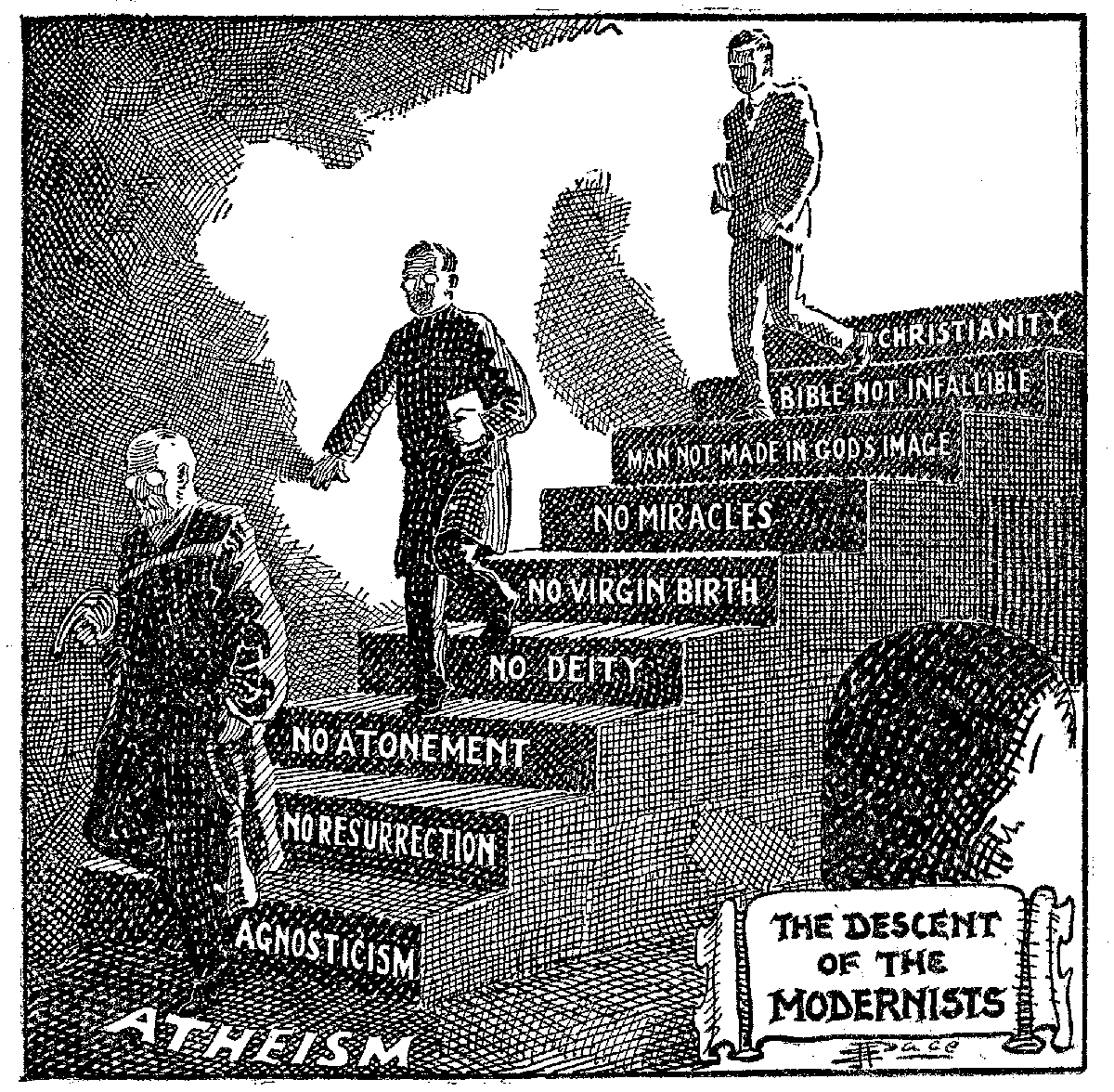
At the same time, Sheen was defying Protestant stereotypes about Catholic moralism with a strong emphasis on God’s grace and the sinner’s redemption through Christ.
Scholars writing later on about “America’s Religious Depression” concluded that the malaise mostly affected mainline Protestantism, in which churches themselves seemed to be turning against Christianity. In contrast, Christians found The Catholic Hour and The Lutheran Hour encouraging and invigorating, while nonbelievers discovered a Christianity different from the one they had rejected.
America finally emerged from its religious depression—just as it came out of its economic depression—with World War II, and churches grew significantly in the postwar era. Surely The Catholic Hour and The Lutheran Hour played a part in that revival.
Catholicism and Lutheranism were often seen as foreign, ethnic religions, but both programs promoted American patriotism (a concept Sheen helpfully explained as a corollary of Christ’s commandment to love our neighbors).
They praised the Declaration of Independence, the U.S. Constitution, and American liberties. This did not, however, prevent them from preaching against the nation’s sins, such as greed, materialism, the breakdown of the family, sexual immorality, and—perhaps surprisingly for the time—racism. In one sermon, Maier castigated the enslavement and continued mistreatment of black people, denounced the way Americans stole the land of the Indians, and condemned anti-Semitism.
When World War II broke out, both speakers strongly supported the war effort and prayed for victory. But they both criticized the decision to drop atomic bombs on Japan. And both Sheen and Maier strongly opposed Communism, offering incisive critiques of Marxist economic theory, Soviet totalitarianism, and left-wing atheism.
The Catholic Hour did much to persuade Americans that Catholicism was an authentically “American” religion.
The Catholic Hour did much to persuade Americans that Catholicism was an authentically “American” religion. Sheen tried to show American Protestants that Catholics, too, love Jesus and support America. This affected not only non-Catholics, with their legacy of anti-Catholicism, but also cradle Catholics, who often segregated themselves along ethnic lines. Sheen helped Irish Catholics, Italian Catholics, Polish Catholics, German Catholics, and Hispanic Catholics realize that they were all Catholics and all Americans.
During World War I, anti-German sentiment led to physical assaults on German Lutherans, and 34 states banned or restricted the use of the German language. That didn’t happen during World War II, largely because German immigrants were more assimilated by then and had adopted the English language. But The Lutheran Hour was surely a factor.
The program also showed Americans that Lutherans were true Bible-believing, Gospel-preaching Protestants despite their sacramental spirituality and liturgical worship. And it showed Lutherans, who tended to be suspicious of American culture and ecumenical entanglements, that they had something to offer all Americans. After World War II, the LCMS grew dramatically, with congregations putting up signs proclaiming, “The Church of the Lutheran Hour.”
In 1950, Walter A. Maier died of a heart attack at the age of 56. In 1952, Fulton Sheen, now a bishop, left radio for the new medium of television, where he continued his successful ministry until 1968. He died in 1979 at the age of 84. The Vatican is currently considering his canonization (he has already been proclaimed a “venerable servant of God”).
The Lutheran Hour continues on the radio to this very day and has had a series of speakers, all of them heavy hitters. Although the radio medium is in decline, the program still reaches an audience of 1 million.
While Catholics, Lutherans, and other Christian ministries are well-represented on the internet, today’s electronic media is not so much broadcasting as narrowcasting, tailored to ever-more tightly defined niche audiences. So accomplishing what Sheen and Maier did with the medium of their time is now much more difficult. (Episodes of both programs are available on YouTube, ready to find new audiences.)
But what they did to address the “religious depression” of their day is instructive for today’s “religious depression.” While avoiding politics and moralism, Sheen and Maier made their listeners realize their need for God. And instead of revising Christianity to make it conform to secular culture, they proclaimed, in the words of a Lutheran Hour slogan, a “changeless Christ for a changing world.”




